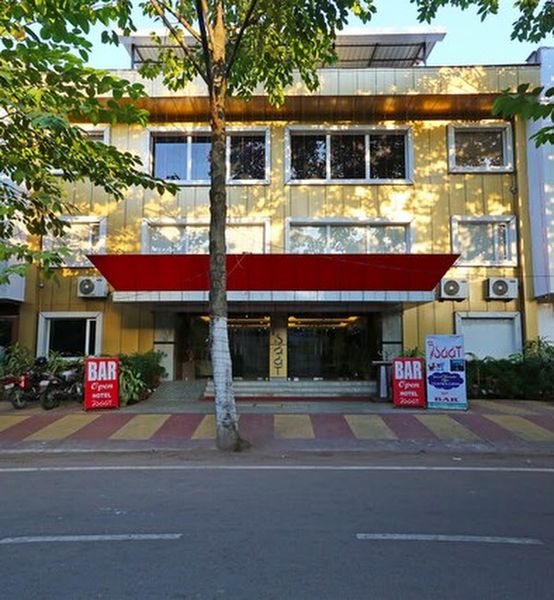Best Time to Do the Tarsar Marsar Trek: A Comprehensive Guide
 Sunil Buri
03 Sep, 2024
9 mins read
27
Sunil Buri
03 Sep, 2024
9 mins read
27

The Tarsar Marsar Trek, located in the stunning Kashmir Valley, is a trekker’s paradise, offering a unique blend of serene alpine lakes, lush meadows, and towering mountains. Known for its breathtaking beauty, the trek is one of the most sought-after experiences in the Indian Himalayas. However, timing your trek correctly is essential to fully appreciate the mesmerizing landscapes and avoid any weather-related challenges. In this article, we’ll explore the best time to embark on the Tarsar Marsar Trek, providing you with valuable insights to plan your adventure at the ideal time.
Overview of the Tarsar Marsar Trek
The Tarsar Marsar Trek takes you to two of Kashmir’s most beautiful alpine lakes, Tarsar and Marsar, nestled amidst the Aru Valley. The trek spans over 7 days, covering a distance of approximately 48 kilometers. It is considered a moderate trek, suitable for both seasoned trekkers and those with a good fitness level. The trek offers a stunning mix of landscapes, from verdant meadows to pristine lakes and panoramic views of the surrounding peaks.
Best Time to Trek to Tarsar Marsar
The optimal season for the Tarsar Marsar Trek is from June to September. Each of these months offers a unique experience, so let’s dive into what you can expect during each period.
1. June: The Beginning of the Trekking Season
- Weather and Trail Conditions: June marks the start of the trekking season in Tarsar Marsar as the snow begins to melt, making the trails accessible. The weather during this month is generally mild, with daytime temperatures ranging from 15°C to 20°C and cooler nights dropping to 5°C or lower.
- Scenic Beauty: The landscape in June is a captivating blend of snow patches and blossoming wildflowers. The rivers and streams are full from the melting snow, and the valleys are lush and green, offering a picturesque setting for trekking. This is an excellent time for those who enjoy walking on snow-covered paths while witnessing the vibrant rebirth of nature.
- Crowd Level: Being the start of the season, the trails are less crowded, allowing for a more peaceful and immersive experience.
2. July: Peak of Scenic Beauty
- Weather and Trail Conditions: July is considered one of the best months to undertake the Tarsar Marsar Trek. The weather is stable, with pleasant daytime temperatures between 17°C and 22°C, and nights are comfortable. The snow has mostly melted, leaving behind clear trails and lush meadows.
- Scenic Beauty: The valleys are at their greenest, and the wildflowers are in full bloom, creating a vibrant and colorful landscape. The lakes are accessible and pristine, reflecting the clear blue skies and surrounding mountains. This is the ideal time for photography and enjoying the full beauty of Kashmir’s summer.
- Crowd Level: July is the peak season, so you may encounter more trekkers, but the beauty of the surroundings makes it worth it.
3. August: The Monsoon Magic
- Weather and Trail Conditions: August brings the monsoon season to the Kashmir Valley, but unlike many other parts of India, the rainfall here is moderate and usually occurs in the form of brief showers. Daytime temperatures range from 15°C to 20°C, and nights are cool.
- Scenic Beauty: The monsoon enhances the lushness of the meadows and forests, adding a fresh, vibrant feel to the landscape. The rain brings out the best in the flora, making the scenery more vivid and alive. The lakes are full, and the trails, though slightly wet, remain accessible and safe for trekking.
- Crowd Level: The number of trekkers typically decreases during August due to the monsoon, so if you prefer a quieter trek with fewer people around, this is a great time to go.
4. September: The End of the Season
- Weather and Trail Conditions: September marks the end of the trekking season for Tarsar Marsar. The monsoon recedes, leaving behind clear skies and crisp air. Daytime temperatures are comfortable, ranging from 14°C to 18°C, with cooler nights that may drop to near freezing at higher altitudes.
- Scenic Beauty: The landscape begins to transition into autumn, with the foliage taking on golden and reddish hues. The lakes are still accessible and beautiful, though the trails may start to show signs of the approaching winter. This is an excellent time for those who prefer cooler weather and the changing colors of the season.
- Crowd Level: By September, the number of trekkers decreases further, providing a more serene and reflective experience.
Why Timing Matters
Choosing the right time for the Tarsar Marsar Trek is crucial to ensure you experience the trek’s full beauty and avoid any potential challenges. Trekking too early (before June) can mean snow-covered and inaccessible trails, while trekking too late (after September) might bring the onset of winter, closing the routes. Each month from June to September offers a unique perspective on the Kashmir Valley, from snow-draped landscapes to vibrant meadows and autumnal hues.
Conclusion
The Tarsar Marsar Trek is a journey through one of the most beautiful regions in the Himalayas. Whether you choose to go in June to experience the lingering snow, in July for the peak of summer beauty, in August for the lush monsoon landscapes, or in September for the tranquility of early autumn, each season has its charm. By planning your trek during the best time, you’ll be able to fully appreciate the serene lakes, picturesque valleys, and the overall splendor of the Tarsar Marsar region.
Written By:
Sunil Buri



Hotels at your convenience
Now choose your stay according to your preference. From finding a place for your dream destination or a mere weekend getaway to business accommodations or brief stay, we have got you covered. Explore hotels as per your mood.





